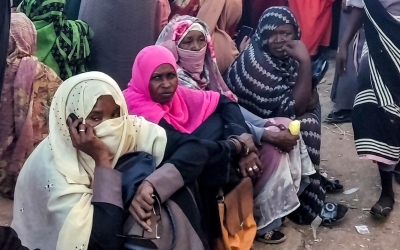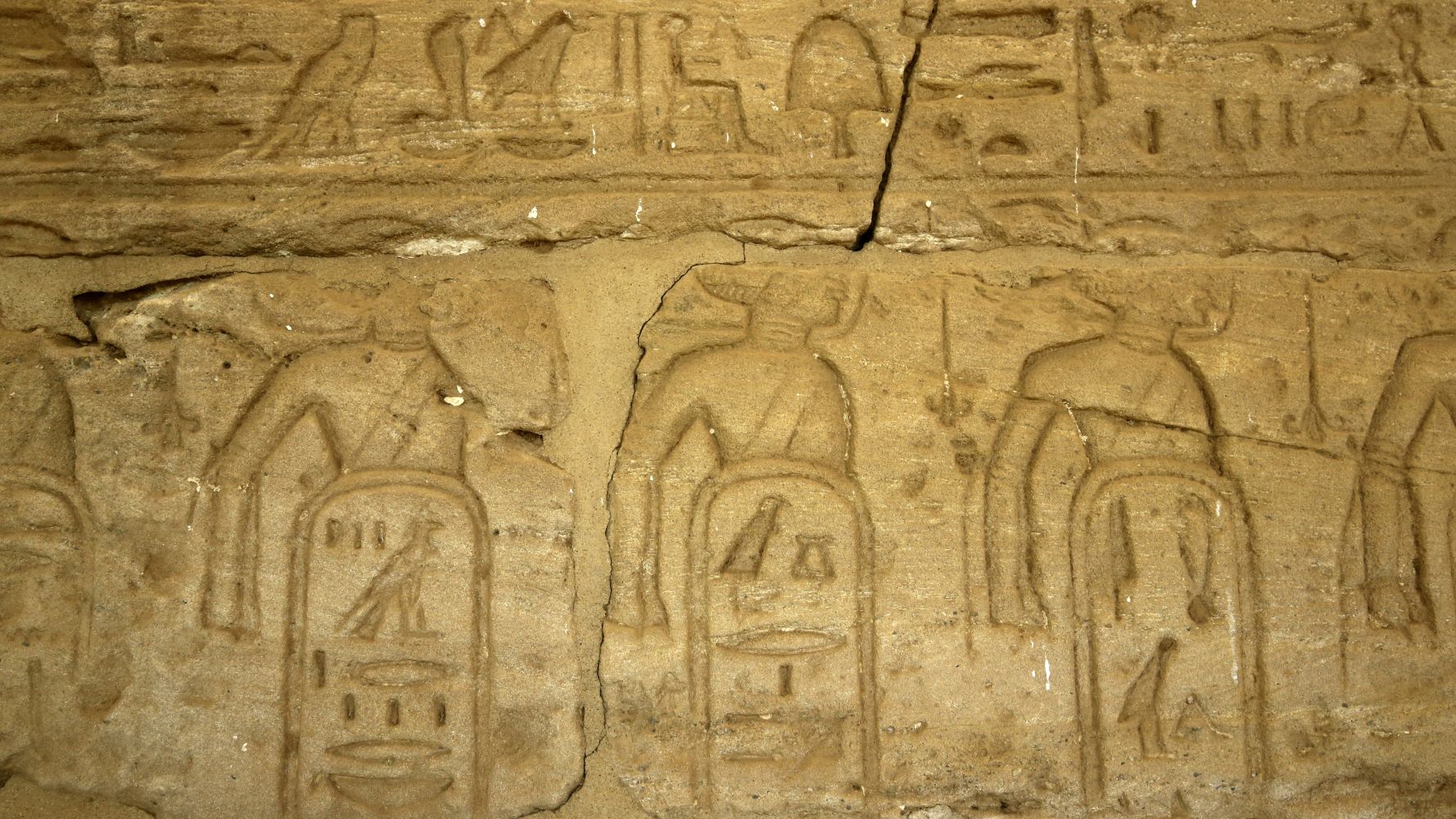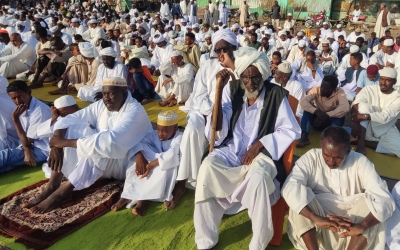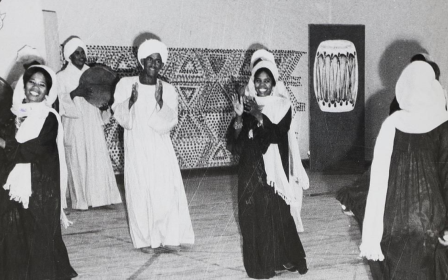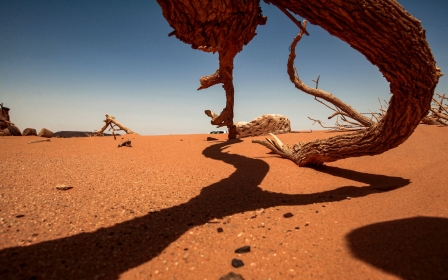War in Sudan is ravaging its rich history
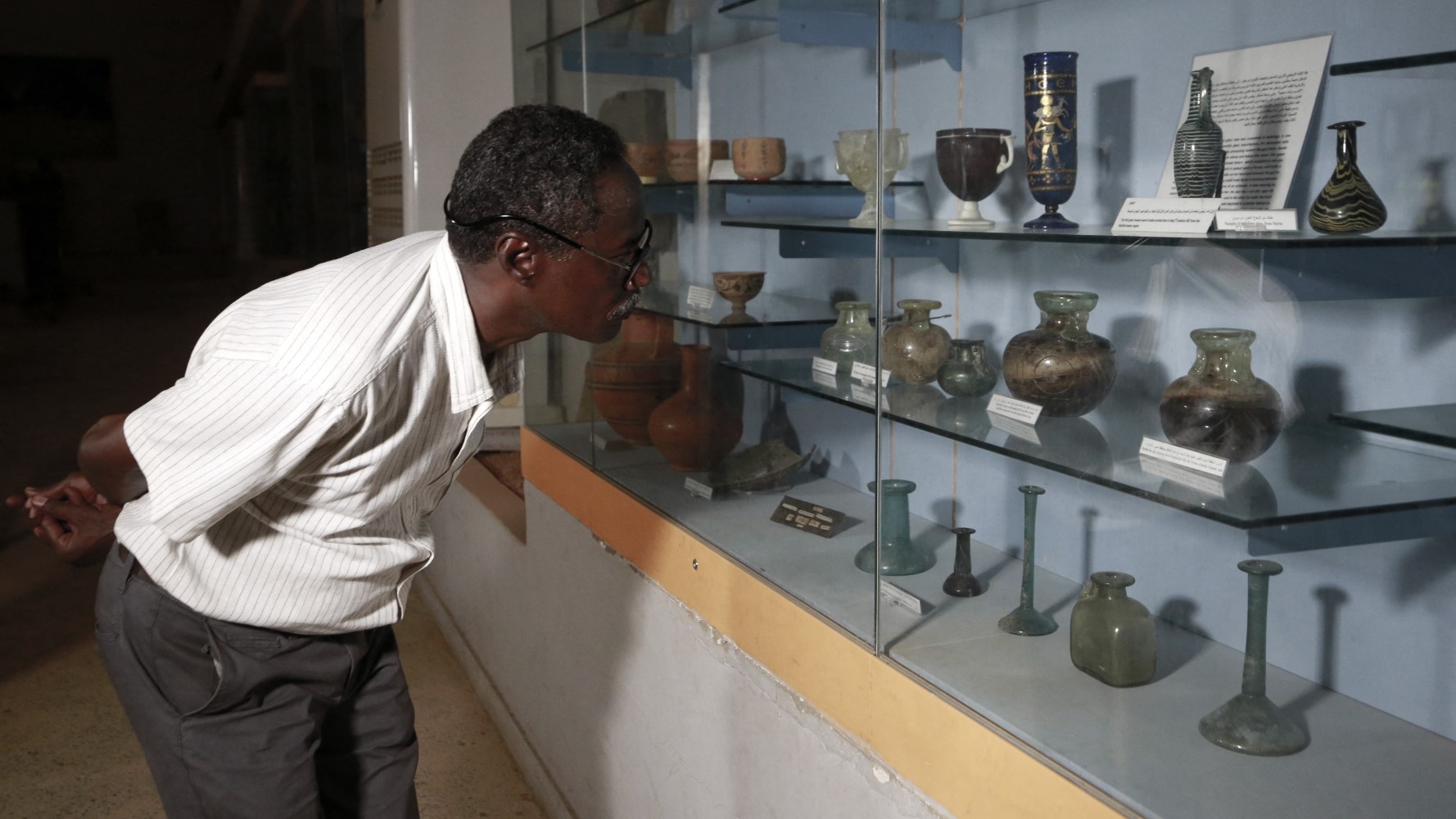
Last December, Sudanese heritage enthusiasts were taken aback when images emerged of Rapid Support Forces (RSF) troops posing in front of the iconic remnants of the ancient Kingdom of Kush, in the Meroe Island.
The archaeological complex, listed as a Unesco World Heritage Site, is located in semi desert land, which stretches between the Nile and the Atbara rivers in the northern River Nile State.
This was home to a powerful kingdom that existed between the eighth century BCE and the fourth century CE, whose empire at its zenith spread from the Mediterranean all the way to the heart of Africa.
The area consists of the royal city of the Kushites in Meroe, by the Nile, and the religious centres of Naqa and Musawarat al-Sufra, and is famous for its pyramids, temples and domestic buildings, some of which formed the backdrop of the RSF propaganda footage.
The images from the Island of Meroe were not the first to set off the alarms.
New MEE newsletter: Jerusalem Dispatch
Sign up to get the latest insights and analysis on Israel-Palestine, alongside Turkey Unpacked and other MEE newsletters
In June, two months after war broke out between the army and the RSF, another video featuring paramilitary fighters caused a stir.
The fighters had raided a laboratory at the National Museum in Khartoum, arguably Sudan’s most important museum, and at the time claimed that the ancient corpses and mummies were in fact victims of the former regime.
The museum, established in the early 1970s, houses the country’s largest archaeological collection, including some of the world’s oldest embalmed mummies, and is located in the very heart of the nation’s capital, an area hard hit by the fighting.
The scenes at Meroe and the National Museum captured the fragility of Sudan’s cultural and historical heritage amid a fierce civil war that has caused vast destruction, which has sparked widespread vandalism and looting.
“It is difficult to tell the scale of the damage,” says Tomomi Fushiya, an archaeologist with extensive experience in Sudan now focused on trying to track what is being lost.
“I think most of the heritage, including museums, theatres, archives, is in one way or another damaged,” she said.
The epicentre of the disaster
Mapping Sudan’s rich cultural and historical heritage, and assessing the damage it has sustained since the onset of the war, is a daunting task, according to experts in the field.
The National Corporation of Antiquities and Museums (NCAM) alone, which is the body responsible for managing Sudan’s antiquities and archaeological sites, runs 15 museums, including three in Khartoum, three in Darfur and one each in North Kordofan and Gezira.
All of these are areas heavily ravaged by fighting.
“We cannot separate ancient heritage from the [rest] of Khartoum: infrastructure, civilian buildings, government units, universities, hospitals; all are destroyed,” said Mohamed Bashir, a member of the Archaeology department at the University of Khartoum.
The American-based Cultural Heritage Monitoring Lab used satellite imagery to detect signs of fire damage on protective structures surrounding two temples within the National Museum complex's garden, suggesting at least some minor damage inflicted by shells.
Heritage For Peace (HFP), an international non-profit that has produced the most detailed reports on the current state of heritage in Sudan, has also documented the presence of snipers on the roof of the museum, which suggests it has been used for military purposes.
Still, the half-dozen sources consulted by Middle East Eye said the state of the collections inside the museum remains unknown because the staff, including security, have fled its premises.
A bleaker picture emerges from the Republican Palace complex, a symbol of Sudan’s sovereignty and closely tied to the period that dawned with its independence.
Historic events that took place there include the 1967 Arab League summit, which adopted the Khartoum Declaration vowing not to reconcile, recognise and negotiate with Israel following the Naksa of 1967.
The site houses a museum, located in a former Anglican cathedral dating to the early 20th century, containing important relics of Sudan’s modern history, such as presidential vehicles, paintings and gifts. It also hosts a library with official archives and documents.
Some of the compound’s buildings, including the museum, have sustained significant damage, including to their walls, roofs, entrances and windows from the impact of shells, bullets and fire, according to the most recent report released by HFP.
A report aired in late January by the Emirati TV broadcaster Al-Hadath shot from inside the complex also revealed extensive devastation in the palace compound.
The old Republican Palace was reportedly hit again in mid-May by an army strike, according to images circulated on social media that show significant damage.
Not far from it, in the historic quarter of Omdurman, lies the renowned Khalifa House, an ethnographic museum built in what was once the administrative seat of the short-lived Mahdist State at the end of the 19th century.
The importance of this museum starts with the building itself, which is one of the last and best-preserved traditional structures of its era, and its collection included objects from the Mahdist government, such as one of the last eight units of the world’s first all-terrain vehicle, an Arrol-Johnston automobile.
The Khalifa House is located in an area hit by heavy clashes and the RSF occupied at least one of its rooms and the nearby mausoleum of the Mahdi, according to the HFP, so the two sites are expected to have sustained substantial damage.
Sudanese journalist Mohanad Hashim has also reported that the RSF looted the museum.
Scarcity of information
Damage and losses are believed to have hit many other landmarks in the capital. But the compilation of information has been severely hampered by the large displacement of its people and the difficulty to access many violence-stricken areas, experts told MEE.
“We know that the museums are endangered due to the armed conflict and the violence,” Ghalia Jar Al-Nabi, acting director of the NCAM, acknowledged.
“In Khartoum we don’t have any news on our collections, because the whole area is a battlefield and it is impossible for anybody to take the risk to go there and make [an accurate] assessment of the losses and damages,” she lamented.
Another obstacle is the lack of digitisation of Sudanese heritage, which now poses an extra challenge in assessing losses.
“This remains a big problem,” said Isber Sabrine, co-founder and president of HFP, “and it should be solved before the situation becomes completely disastrous.”
Bashir, from Khartoum University, said the destruction of critical infrastructure poses further hurdles to the preservation of artefacts, mainly due to the lack of electricity.
Outside Khartoum state, the area hardest hit by the war has been the western region of Darfur, the RSF’s traditional stronghold and the part of the country where the worst and most extensive atrocities have been documented, also affecting its heritage.
The South Darfur Museum, in the state capital of Nyala, had reopened in 2018 after renovation, and it housed an array of archaeological artefacts from across the country, an ethnographic collection donated by the local community, and a set of historical photographs.
HFP, however, has warned that the museum lies near a military site, and it has reported damage to its main building, warehouse, and the roof of the storage room.
This museum held a special significance because it was one of three regional museums in Sudan that had recently been refurbished in areas that had suffered from decades of neglect and conflict.
The aim had been to turn the museum, alongside another two in Omdurman and El-Obeid in North Kordofan, into community museums and cultural hubs.
'In Khartoum we don’t have any news on our collections, because the whole area is a battlefield...'
- Ghalia Jar Al-Nabi, acting director of the National Corporation of Antiquities and Museums
El Geneina, the capital of West Darfur, had another important museum established in the former palace of a sultan of the local Masalit community, and it displayed a collection of items significant to the local culture and history of the region.
Its current state is uncertain, but El Geneina has suffered extensive devastation at the hands of the RSF and allied militias, and it is feared that the museum has also been subject to destruction and looting, both of which have already occurred in the past few years.
Groups concerned with the preservation of Sudanese heritage have also warned that other museums across the country are at risk either because they are located near vulnerable infrastructure or because of maintenance problems that could take their toll amidst war.
Among them are the museum in the state capital of Gezira, Wad Madani, and the Sheikan Museum in El Obeid (North Kordofan), part of the network of community museums.
To prevent further losses, NCAM officials, in cooperation with international institutions, have undertaken missions to evacuate artefacts from museums at risk, Jar Al-Nabi said.
So far, two museums have been evacuated: one in Sennar, whose collections were stored in a safe place in February, and another one in Meroe, evacuated last June.
The museum in Wad Madani was also being evacuated when the RSF occupied the region in December, said Ekhlass Abdul Latif, secretary of the Sudanese Museums Secretariat.
Abdul Latif noted that teams have been working to secure artefacts from other museums as well, including two in archaeological sites located in the Northern state.
Vast treasures at risk
Meanwhile, the fate of archives of great historical value also remains uncertain.
Among them, two stand out: the National Records Office, which serves as the national archives and holds more than 30 million documents dating back to 1504, and those of the National Radio and TV Corporation, which houses one of Africa’s largest film archives.
Although no reports assessing their condition have yet been issued, the fact that some of these archives - including the two mentioned - are located in central areas of Khartoum, where fierce clashes have taken place, portends significant damage.
Material losses have also been documented by Sudan’s Ministry of Higher Education, which has registered full or partial damage - including fires and looting - in more than 100 institutions in Khartoum state alone, according to a statement issued last summer.
These include historic institutions such as Khartoum University, Sudan’s oldest and largest, which was founded in the early 20th century and turned public after independence in 1956.
'Sudan is such an important place for us to understand ancient Egypt itself, the ancient Nile Valley, but also their connections with Africa'
- Rennan Lemos, University of Cambridge
University libraries, which held thousands of books, have been affected as well.
Images have also emerged showing extensive destruction at universities in Zalingei, the capital of Central Darfur, Nyala and El Geneina, according to HFP.
The University of Khartoum housed a natural history museum, established in 1929, which suffered significant damage in its main building during the first days following the outbreak of war, according to satellite imagery reviewed by CHML.
Sudan was also known as a country rich in private collections, workshops and galleries. But the losses in these places are difficult to assess as the fighting rages on.
Monitoring groups and authorities are also worried about the archaeological sites in the Northern and Nile River states, which have little to no security and are exposed to looting. People displaced by the war have also taken refuge there.
Sabrine of HFP noted that they have so far focused on raising awareness of the importance of Sudan’s national heritage, and on framing its losses as another war crime.
But he said they are also preparing to launch projects to train local staff to document as much heritage as possible in order to maintain greater control of valuable artefacts.
For Rennan Lemos, an archaeologist working in Cambridge who has been on missions to Sudan since 2008 and was involved in a project at the National Museum when the war started, the loss of heritage in the country is a loss that will be felt by the whole world.
“Sudan is such an important place for us to understand ancient Egypt itself, the ancient Nile Valley, but also their connections with Africa,” he said. “[It is not just about] keeping Sudanese history safe, but for the whole of humankind; it’s such an important place for human history.”
Bashir, from Khartoum University, hopes that the current level of destruction will at least serve to highlight the importance of Sudan’s heritage at home when the violence stops.
“In Sudan, unfortunately, the state did not take care of the archaeology and heritage. For a long time, they neglected Sudanese heritage,” he said. “To be a united nation, we should take care of our antiquities and heritage after this war. It is a source of information, a source for identity.”
Middle East Eye delivers independent and unrivalled coverage and analysis of the Middle East, North Africa and beyond. To learn more about republishing this content and the associated fees, please fill out this form. More about MEE can be found here.


